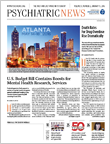Mass shootings are an epidemic that the CDC is barred from studying. After the Umpqua Community College shooting in Oregon, President Obama said, “We are the only advanced country on earth that sees these kinds of mass shootings every few months.” APA has taken a leadership role advocating for sensible policy approaches to reduce gun violence. There are two necessary ingredients for a mass shooting: ready access to guns and uncontained rage. Psychiatrists are well positioned to address both.
Proposed solutions to mass shootings range from assault-weapon bans, to better background checks, to refusing gun sales to people with mental illness. Within our field, restricting gun sales to patients will increase stigma, add a disincentive to seeking psychiatric services, and do little or nothing to prevent future mass shootings. Yet in the public’s perception, psychological aberration leads a person to mass murder, so gun restrictions for psychiatric patients seems more acceptable than restrictions on all gun owners. Legislation in 44 states and the District of Columbia
denies gun ownership to individuals who have been adjudicated to psychiatric treatment.
None of the headline-grabbing mass shootings of recent years, including Columbine, Virginia Tech, Fort Hood, the Aurora movie theater, the Tucson shopping center, Sandy Hook Elementary, and the Charleston Emanuel AME Church involved shooters who had been hospitalized for psychiatric treatment; therefore, such laws were immaterial in these cases.
The AMA’s Principles of Medical Ethics states, “A physician shall recognize a responsibility to participate in activities contributing to the improvement of the community and the betterment of public health.” As physicians interested in public health and safety, we must speak up when misguided public policy increases stigma without improving safety. Although virtually all mass shooters are men, it would be ridiculous to propose that all men be barred from gun ownership. Similarly, although mass shooters appear to be mentally imbalanced in some way, targeting psychiatric patients for gun restrictions simultaneously cuts too broad a swath and misses the most likely offenders. We should pay less attention to the general category—men who appear mentally ill—and focus instead on the particular catalyst that results in mass shootings: uncontained rage.
In his paper “Uncontained Rage: A Psychoanalytic Perspective on Violence” (Bulletin of the Menninger Clinic, volume 71, number 2, Spring 2007, pp. 115-131), Dr. Walter Menninger reviews the psychoanalytic literature concerning internal processes that result in rage. Menninger posits that rage is a response to narcissistic injury, in which humiliation experienced by a fragile ego unleashes raw destruction as the ego fights for survival against a perceived threat. The paper ends with a case history illustrating the circumstances that led to a mass shooting and sketches of 14 mass shootings between 1966 and 2007.
Combine a narcissistic threat sufficient to unleash rage with the entitlement to high-capacity weapons in the United States, and our unique epidemic of mass shootings becomes more understandable. The solutions must be multifaceted. Enhanced access to psychiatric treatment to address the narcissistic insult that unleashes uncontained rage is imperative. A handful of states
mandate gun relinquishment by any subjects of domestic violence restraining orders.
A recent suggestion is to allow family members or police to petition for gun violence restraining orders (From the President,
Psychiatric News, November 6, 2015). Solutions should also include assault-weapon bans and limits on ammunition, because not all potential shooters will receive mental health treatment or be the subject of a restraining order. Eventual national gun reduction through public education is a long-term goal.
Gun violence is a crisis of public health, not mental health. As with other public health issues, such as the hazards of tobacco or the benefits of wearing seat belts, change takes time. It has been 51 years since Luther Terry, M.D., the ninth U.S. surgeon general, released his report on the health consequences of smoking. His leadership sparked five decades of progress, including aggressive public education as well as local and national legislative action. The population of smokers has declined from 40 percent of adults to 20 percent; exposure to secondhand smoke has been reduced through bans on smoking in airplanes, restaurants, offices, and public buildings; and smoking-related morbidity and mortality have declined proportionately. A multifaceted approach applied over enough time yields measurable results.
Imagine if the surgeon general, the CDC, AMA, National Institutes of Health, APA, and other organizations whose mission involves improving health in the United States were all to take on gun violence as a public health emergency. Instead of being banned from asking questions about gun ownership, as is the case in Florida (Texas is considering a similar law, and Montana, Missouri, and Minnesota have enacted less restrictive versions of the Florida law), physicians should be empowered to educate patients about the increased rates of homicide, suicide, and injury among gun owners.
Health policy organizations and individual physicians are well positioned to take a leadership role in the national conversation on gun violence. We must build momentum toward sensible restriction of guns in specific at-risk populations and also courageously adopt a long-term campaign toward gun reduction.
Mass shootings horrify us, and gang murders depress us, but two-thirds of gun fatalities are from suicide, and that fact should galvanize psychiatrists to action.
Psychiatrists interested in promoting gun safety have many opportunities for involvement, including joining their local gun control group or working with their district branch legislative committee. And, of course, we must be vigilant to attend to mounting narcissistic injuries in any patient who may harbor violent fantasies. It will be a monumental effort, but lives depend on it. ■
APA’s
Principles of Medical Ethics With Annotations Especially Applicable to Psychiatry and Opinions of the Ethics Committee on the Principles of Medical Ethics can be accessed
here.

